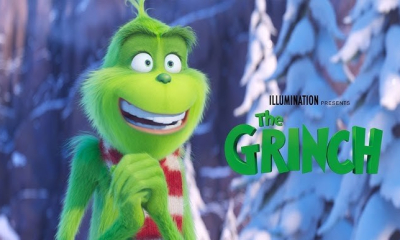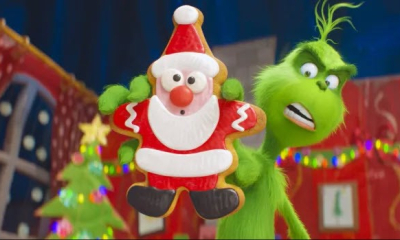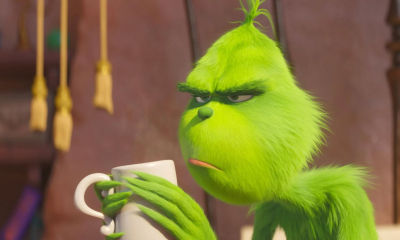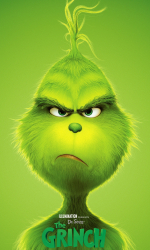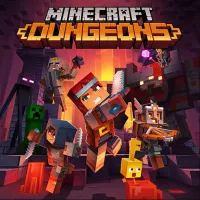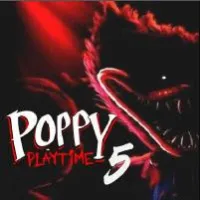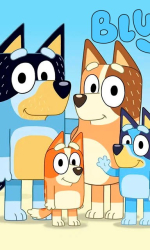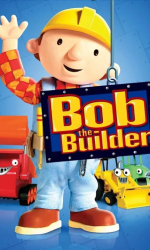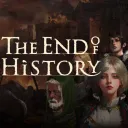The Grinch
As the holiday season rolls around each year, a certain animated character seems to stand out amidst the glittering lights and frosty whispers of winter. His name is familiar to many, yet his intentions start off far from what we traditionally associate with the festive season. Yes, I'm talking about The Grinch. Revisiting this timeless cartoon this year, I was transported into a world that felt simultaneously whimsical and thematically resonant — a true testament to the brilliance of Dr. Seuss' creation.
The Grinch is an embodiment of transformation, and the storyline navigates through themes that, although wrapped in vibrant colors and catchy tunes, delve into the gritty reality of isolation and redemption. But, beneath its apparent simplicity, there is something profoundly universal about this narrative. The cartoon, with its rhythmic dialogue and masterful animation, pulls us into a quaint land where tradition and kindness are at the forefront, albeit facing a peculiar challenge.
Origin and History
The origins of the Grinch character can be traced back to the imaginative genius of Theodor "Dr. Seuss" Geisel. First appearing in a children's book in 1957, the character of the Grinch has continually captivated audiences with his endearingly grumpy disposition and subsequent transformation. This beloved story was catapulted onto television screens in 1966 with the release of "How the Grinch Stole Christmas!", an animated special directed by Chuck Jones.
Chuck Jones, known for his mastery in animation with works such as Looney Tunes under his belt, brought the Grinch to life in a way that has both haunted and enchanted audiences for decades. Collaborating closely with Dr. Seuss, Jones crafted a visual narrative that not only remained true to the book's core but expanded it into a dynamic, multi-dimensional storytelling experience that resonates with viewers of all ages.
Visual Splendor
One of the first things that draw you into the world of The Grinch is the distinct visual style. With an eye-popping palette and unmistakable character designs, the animation captures attention immediately. The Grinch himself, with his green fur and slender frame, stands in stark contrast to the snowy Whoville and its joyful inhabitants.
The animation boasts an old-school charm, a little rough around the edges compared to today's hyper-realistic styles, yet that's what gives it character. Each frame feels imbued with personality, making it an immersive visual journey. The exaggerated expressions and dynamic movements contribute magnificently to the tone and mood of each scene, enhancing the storytelling experience.
Character Depth and Transformation
The character of the Grinch is one of the most iconic in animated history. Initially depicted with a cold heart "two sizes too small," the Grinch epitomizes bitterness towards the seemingly incessant joy and camaraderie of the Whos. Yet, his character arc is deeply reflective, making the audience question the very nature of contentment and camaraderie.
As the story unfolds, the Grinch's transformation is as emotional as it is visual. The moment he realizes the true spirit of Christmas resonates even beyond the screen. It’s not only about watching the Grinch change, but about experiencing a shift in understanding about compassion and joy. This dynamic transformation is what endears him to us, inviting empathy rather than disdain.
Narration and Dialogue
Narration plays a crucial role in The Grinch, guiding viewers through the story with rhythmic and engaging prose. The voice work by Boris Karloff is exemplary, providing the gravitas needed to elevate the Grinch’s journey from one of disdain to delight. His narration is no simple task given the dual role of voicing the Grinch himself, yet Karloff manages it with aplomb.
The dialogues, much like Dr. Seuss' text, are peppered with rhymes that not only retain the whimsical nature of the book but also complement the visual storytelling. Each line serves its purpose, adding layers to the characters’ personalities and drawing us deeper into the narrative.
Musical Scores
Music is another cornerstone of the animated special, and "You're a Mean One, Mr. Grinch" has become synonymous with the character. The song's catchy, sardonic lyrics and bouncy melody provide a humorous foil to the Grinch's sour disposition.
The musical score adeptly enhances the tone of the film at every juncture, whether augmenting the comedic escapades or accentuating moments of revelation and change. It's these audial elements that make the cartoon not just a viewing experience, but one that is vividly auditory.
Setting and Atmosphere
The setting of Whoville is quintessentially idyllic, a town that visually represents the warmth of a community united by shared celebrations. The snow-clad town, with its whimsical architecture and bright decorations, paints a picture of hospitality and festivity.
In contrast, the Grinch's abode on Mount Crumpit reflects his initial state of mind—isolated, dreary, and desolate. These contrasting settings not only set the stage for the story but also deepen the narrative by visually showcasing the Grinch's emotional barriers and eventual acceptance of the community's warmth.
Universal Themes
The Grinch tackles themes of redemption, acceptance, and the impact of community, making it profoundly relatable. The idea that joy and belongingness are not contingent upon material possessions challenges the often commercialized view of holiday celebrations.
The narrative's exploration of loneliness and the transformative power of kindness offers solace, reminding us of the human capacity for change and growth. The animation touches upon the essence of what it means to be part of something larger than ourselves—an uplifting holiday message that is timeless.
Audience and Cultural Impact
Throughout generations, The Grinch has remained a holiday favorite for audiences of all ages. Its appeal crosses generational lines, offering something relatable for everyone from children to adults. This enduring appeal is a testament to the well-crafted narrative and its core message of hope and reconciliation.
Culturally, The Grinch has embedded itself into holiday traditions, with phrases and imagery from the story finding their way into the public lexicon. The constant reinventions and adaptations in various formats, from live-action films to stage plays, further showcase its significant cultural impact.
Emotional Resonance
Watching The Grinch is not just an exercise in visual and auditory delight; it is an emotional journey. Each scene, from the Grinch's initial plotting to his eventual acceptance, is woven with emotional undercurrents that engage the viewer on a personal level.
The poignant moments, especially the climactic scene where the Grinch's heart grows and he embraces the Whos, leaves a lasting impression. It is these emotional beats, carefully curated and beautifully executed, that render the story eternally relevant and emotionally impactful.
Why It Is Interesting
The lasting intrigue of The Grinch lies in its ability to meld humor, pathos, and moral lessons seamlessly. It intrigues with its unique protagonist, someone we find ourselves rooting for despite his apparent misdeeds. The exploration of his psyche and the multifaceted portrayal make the character study incredibly interesting.
Moreover, the cartoon offers layers that invite repeat viewings. Each time, one might discover new nuances in animation, humor, or theme, making it not just a seasonal watch but an exemplary narrative that offers something fresh with each viewing.
My Personal Impressions
Rewatching The Grinch was akin to returning to a cherished memory. It evoked both nostalgia and newfound appreciation for this animated gem. The whimsical nature combined with the profound underlying message of the story resonated deeply with me, perhaps more significantly with the passage of time.
What struck me was the timelessness of the story. Despite being decades old, the themes and the exploration of the character’s journey seemed as pertinent today as the first time I encountered them. This personal revisitation was not merely a viewing experience but felt like a reflective exercise in empathy and understanding.
A Message of Hope and Redemption
The Grinch's story reminds us of the power of redemption and the impact of genuine acts of kindness. The tender message that one's significance is marked by love and togetherness, rather than material pursuits, is comforting and inspirational.
This message, as pertinent during the airing of the animated special as it is today, implores us to look toward our own communities and connections. It encourages us to embody the spirit of generosity and acceptance, offering healing in ways that cut across cultural and temporal boundaries.
Symbolism and Metaphors
The Grinch cartoon is replete with symbolism and metaphors, weaving a rich tapestry of meaning beneath its surface narrative. Mount Crumpit stands as a metaphor for emotional isolation, while the Whos' seemingly indefatigable spirit symbolizes communal strength and resilience.
The transformation of the Grinch’s heart symbolizes the potential in everyone to find goodness within, irrespective of past grievances. The theme of heart growth poignantly illustrates how acts of inclusivity and understanding can foster profound personal change — a metaphor for the cathartic journey of empathy.
Conclusion
In conclusion, The Grinch cartoon is a heartwarming beacon of transformation and community spirit, transcending generations with its universal themes and rich animation. As much a visual splendor as it is a moral fable, it captures the essence of holiday spirit with grace and sincerity.
As it continues to grace screens and hearts year after year, the message of The Grinch remains a vital reminder of the redemptive power of kindness and the importance of togetherness. It's a story that resonates universally, encouraging us to reflect on the true spirit of celebrations and the warmth of human connection.
To download the app, you will get links to the Official Website and/or official digital markets.
